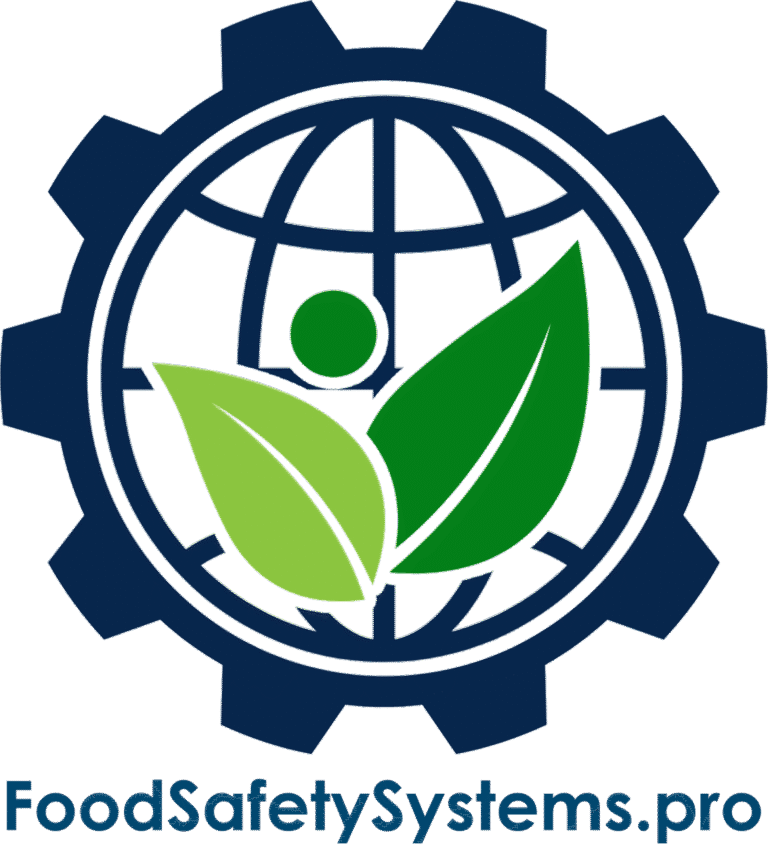Allergen Control Measures
Aligned with SQF Code Edition 9 – System Element 2.7.2
Requirement Overview
SQF Code Edition 9, System Element 2.7.2, requires:
“Effective allergen control measures shall be implemented, including storage, labeling, segregation, and cleaning procedures to prevent cross-contact.”
Food allergens are among the most common causes of product recalls and severe health risks. Proper control measures are critical for protecting consumers and ensuring compliance.
Disclaimer: Food Safety Systems is not affiliated with or endorsed by the Safe Quality Food Institute (SQFI). This article is intended for compliance support and educational purposes only. For official SQF resources, visit www.sqfi.com.

Key Compliance Objectives
-
✓ Segregate allergen-containing ingredients in storage and production
✓ Use clear and consistent labeling throughout the facility
✓ Validate cleaning protocols to ensure no cross-contact
✓ Ensure all staff are trained in allergen awareness and procedures
Step-by-Step Compliance Implementation
1. Storage & Segregation Controls
-
Key Practices:
-
• Use dedicated and labeled storage areas for allergenic materials
• Label containers with bold identifiers (e.g., “CONTAINS: PEANUTS”)
• Implement FIFO (First In, First Out) for allergen tracking
• Use color-coded bins, racks, or zones for allergen segregation
Evidence to Maintain:
-
• Allergen inventory and traceability logs
• Storage layout maps with zoning indications
• Internal inspection records
- • Use dedicated and labeled storage areas for allergenic materials • Label containers with bold identifiers (e.g., “CONTAINS: PEANUTS”) • Implement FIFO (First In, First Out) for allergen tracking • Use color-coded bins, racks, or zones for allergen segregation
- • Allergen inventory and traceability logs • Storage layout maps with zoning indications • Internal inspection records
2. Production Line Controls
-
Control Point
Best Practices
Scheduling
Allergen-containing products produced at end of shift
Changeovers
Full teardown and cleaning between allergen runs
Rework Control
Do not reintroduce allergen-containing material into non-allergen batches
Evidence to Maintain:
-
• Daily production logs indicating allergen use
• Changeover checklists with supervisor sign-off
• Batch records with allergen status notations
| Control Point | Best Practices |
|---|---|
| Scheduling | Allergen-containing products produced at end of shift |
| Changeovers | Full teardown and cleaning between allergen runs |
| Rework Control | Do not reintroduce allergen-containing material into non-allergen batches |
- • Daily production logs indicating allergen use • Changeover checklists with supervisor sign-off • Batch records with allergen status notations
3. Cleaning & Validation Procedures
-
Validation Tools:
-
• Visual Inspections: Ensure no visible residue
• ATP Testing: Acceptable readings based on internal standards
• Allergen Swab Testing: ELISA or lateral flow tests specific to target allergens
Evidence to Maintain:
-
• Cleaning validation logs
• Test results and trend analysis
• Corrective action reports for failed cleanings
- • Visual Inspections: Ensure no visible residue • ATP Testing: Acceptable readings based on internal standards • Allergen Swab Testing: ELISA or lateral flow tests specific to target allergens
- • Cleaning validation logs • Test results and trend analysis • Corrective action reports for failed cleanings
4. Employee Training & Monitoring
-
Training Topics to Cover:
-
• Identification of top allergens and hidden sources
• Proper allergen handling techniques and hygiene
• Preventing cross-contact during equipment use and packaging
• Incident reporting and emergency procedures
Evidence to Maintain:
-
• Employee training logs and attendance sheets
• Knowledge checks and retraining records
• Unannounced allergen handling audits
- • Identification of top allergens and hidden sources • Proper allergen handling techniques and hygiene • Preventing cross-contact during equipment use and packaging • Incident reporting and emergency procedures
- • Employee training logs and attendance sheets • Knowledge checks and retraining records • Unannounced allergen handling audits
Common Audit Findings & Recommended Fixes
Non-Conformance
Recommended Action
Allergen storage not segregated
Revise storage zoning and label all high-risk items
Cleaning validation not conducted
Introduce swab tests and ATP readings post-cleaning
Product mislabeled or unlabeled
Improve label controls and cross-check packaging lines
Staff unaware of allergen protocol
Implement mandatory monthly refreshers
| Non-Conformance | Recommended Action |
|---|---|
| Allergen storage not segregated | Revise storage zoning and label all high-risk items |
| Cleaning validation not conducted | Introduce swab tests and ATP readings post-cleaning |
| Product mislabeled or unlabeled | Improve label controls and cross-check packaging lines |
| Staff unaware of allergen protocol | Implement mandatory monthly refreshers |
Auditor Verification Checklist
During an audit, expect the following:
-
• Review of allergen zoning and storage maps
• Verification of label controls and changeover documentation
• Assessment of test results for cleaning validation
• Interviews with production and sanitation staff
Implementation Roadmap
Design Your Allergen Program
-
✓ Map all allergen zones and review storage layout
✓ Develop SSOPs for allergen-related cleanings
Install Controls
-
✓ Implement color-coded bins, signage, and labeling
✓ Sequence production schedules to minimize cross-contact
Train and Monitor
-
✓ Conduct hands-on allergen training
✓ Perform regular spot-checks and knowledge refreshers
Validate and Improve
-
✓ Use allergen-specific swab tests quarterly
✓ Analyze audit trends and revise procedures annually
Why This Matters?
A strong allergen control program:
-
✓ Prevents cross-contact that could lead to illness or death
✓ Significantly reduces product recall risk
✓ Meets regulatory and retail requirements
✓ Builds trust with consumers and stakeholders
Need Help Implementing or Improving Allergen Controls?
Food Safety Systems offers:
-
✓ Allergen zoning and facility layout templates
✓ Cleaning validation forms and allergen swab log sheets
✓ Training presentation slides and staff quizzes
✓ SOPs for allergen handling, rework control, and emergency response
Privacy Policy | Terms of Service | Disclaimer
Powered by Consultare Inc. Group, A Compliance Company
